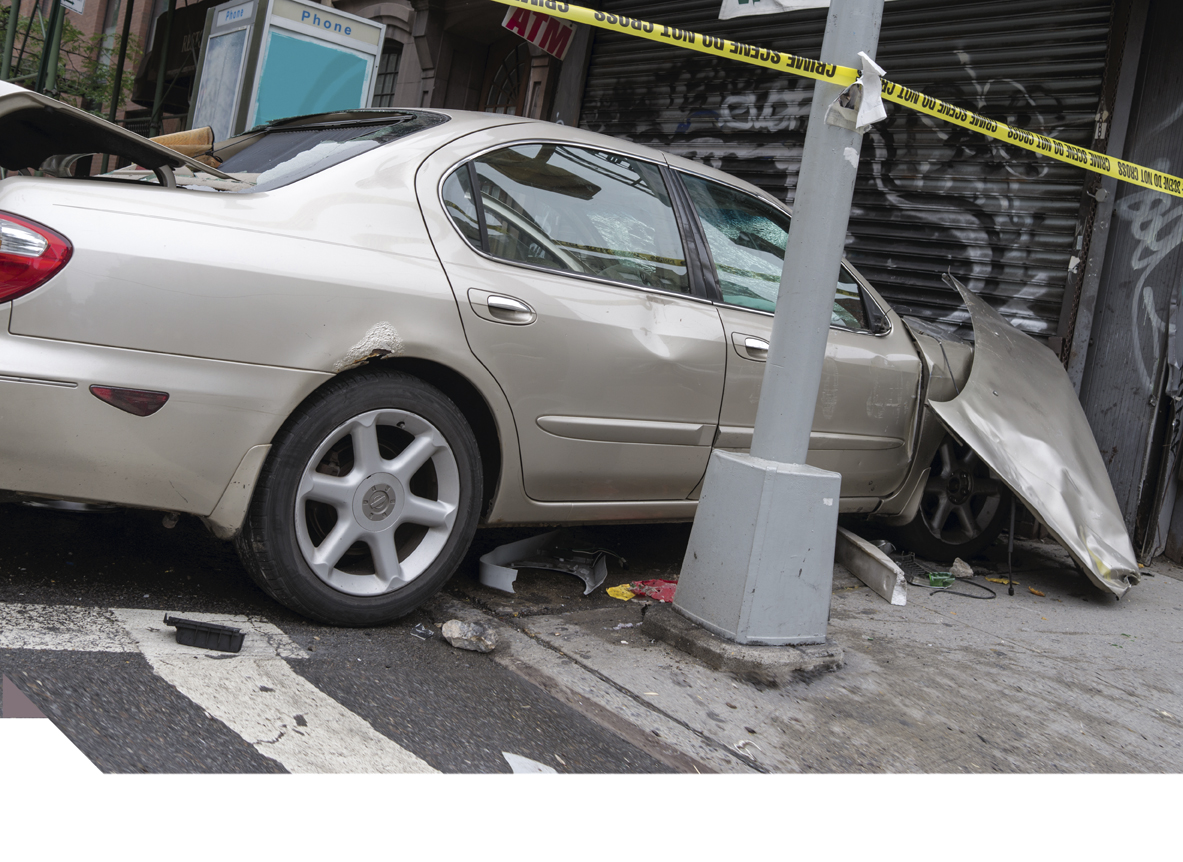Agents can help clients assess their risks and put safety protocols in place
Imagine you’re the owner of a local restaurant or bar. You’re proud of the business you’ve worked hard to build. You’re situated in a prime spot on Main Street, giving you access to critical foot traffic as shoppers, tourists, and other business owners take a respite from their daily routine to dine and relax in your establishment. Your downtown location also provides built-in advertising, as no one drives through the center of town without seeing your signage.
But as commercial insurance professionals know, that prime location can also carry an increased risk, both to the business and its customers, due to the recent increase in storefront crashes. You’ve likely seen weekly or even daily news accounts of these events, when in a horrifying split second, a normal business day turns into a tragedy that can involve severe injuries and even deaths.
In recent months, six Indianapolis restaurant patrons were hospitalized following a crash where the vehicle stopped four feet inside the building. Around that same time, an elderly woman died from injuries sustained as a passenger in a car that slammed into a Canton, Connecticut, restaurant. According to the Storefront Safety Council, a volunteer group dedicated to ending vehicle crashes into buildings, there are more than 60 vehicular crashes into buildings each day across the United States. These crashes injure 4,000 people and kill more than 500 each year.
The Council’s data shows that the top three causes of such crashes are pedal error (applying the gas rather than brake), driver operator error, and driving under the influence. So what appears to be causing this sudden uptick in these crashes?
Crash causes
Distracted driving is likely part of the problem. The National Highway Traffic Safety Administration finds that 80% of all vehicle crashes involve some form of distraction, including texting, reading, eating, or adjusting a GPS device.
Another contributing cause? There are more of us on the roads, driving more miles than ever before. The Federal Highway Administration estimates that a total of 3.2 trillion miles were driven in 2016. That represents an increase of more than 87 billion miles driven, which can be attributed to lower gas prices and an improved economy. The combination of more cars and more miles driven usually leads to more accidents.
There’s another disturbing factor at play when it comes to storefront crashes, and that’s when it’s done intentionally. Thieves have been known to drive through the front of a store with the intention of stealing cash or products from inside during the commotion following the crash.
Legal ramifications
As a commercial insurance professional, you want to offer smart counsel to your customers, who may not realize that, as restaurant and bar owners or managers, they could be at risk for this type of crash.
Due to their increased frequency, storefront crashes can no longer be classified as “unlikely, unforeseeable incidents,” and they’re raising questions about new dimensions of liability for business owners. With increasing media coverage of these events, a higher legal standard may be placed on business owners to anticipate crashes, and injured people may try to claim that the business owner should have anticipated and guarded against accidents of this type.
The ramifications can be significant. Take, for example, a storefront crash in Massachusetts, which eventually led to a multi-million-dollar verdict against the owners of a convenience store chain for failing to properly protect against this type of crash.
The business impact of a crash of this type can also be serious, between property damage and closures during the cleanup and structural repair period, which can sometimes last weeks or months.
Prevention tips
While your commercial clients can’t change driving behaviors or criminally-motivated actions, they can take preventive measures to minimize risk. Talk with them about how to assess their risk and put safety protocols in place:
Evaluate Their Location: Do normal traffic patterns in front of and around the business present a heightened risk of vehicular accidents? At what rate of speed do vehicles travel near the business? How do vehicles park in relation to the business? The business owner may want to work with a safety consultant to analyze the exposure.
Control Your Perimeter: An increasingly popular option for minimizing the risk of storefront crashes is the installation of American Society for Testing and Materials (ASTM)— approved protective barriers, which are designed to slow or stop a speeding or out-of-control car that’s headed toward a storefront.
Analyze Their Parking Layout: Since statistics show that pedal error causes a large percentage of storefront crashes, business owners should consider eliminating nose-in parking around their buildings. Similarly, they can try to avoid parking lot traffic patterns that direct traffic toward the business entrance. If these situations are impossible to change, ASTM-approved protective devices are likely a smart investment to help keep the business, its employees, and patrons safe.
For more information:
Arbella Insurance Group
www.arbella.com
Storefront Safety Council
www.storefrontsafety.org
The author
William S. Hughes, CPCU, is assistant vice president of commercial lines at the Arbella Insurance Group and oversees commercial underwriting and loss control. He has 30 years of experience in property and casualty insurance, risk assessment, and sales management.






